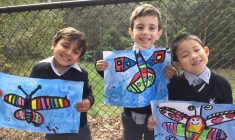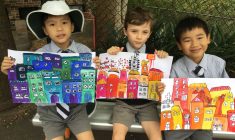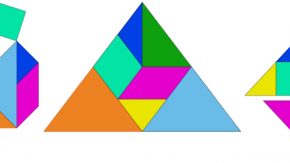Art – Drawing & Visual Literacy
Drawing increases Visual Literacy
After returning from the holiday break I was so delighted when a Kindergarten boy came running up to me in the playground and declared “Mrs Bain I went to the Art Gallery in the holidays!”. With excitement he spoke of the huge silver Captain Cook statue that overlooked the harbour and we chatted about other works he was interested in. I was thrilled that this youngster was so excited by art and wanted to share this passion.
I also have so many boys draw at home and love to share these drawings with me at school. But I must confess, I believe a child’s interest in drawing has decreased over the years. Could it be due to the increased use of technology? Many parents read with their children and are seen by their children to be reading themselves. But drawing?
People of all ages, levels and abilities should be encouraged to take part in drawing activities. Just as it is vital for a child to see their parent read, to inspire reading. Parents are also encouraged to pick up a piece of paper and draw. If you read a story with passion and joy, a child will want a read story again and again. Draw with vibrancy and colour. Let your child know what you are drawing and why you love drawing.
When we draw, we take an opportunity to slow down, and to appreciate how the visual world works. By developing this skill, we gain a deeper understanding of our surroundings and learn a truly universal language. A drawing can communicate an idea more effectively than words. We champion drawing as a powerful tool for invention, for communicating complex concepts, and for its power to engage people with collections and exhibitions in museums, gallery and heritage sites. By fostering a greater understanding of what drawing can mean, and by increasing awareness and engagement, I believe many more people can benefit from, and contribute to society, by drawing.
Believe in learning to draw. After all a picture tells a thousand words.
Mrs Kylie Bain – Art Teacher









